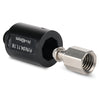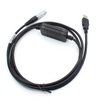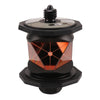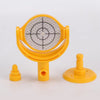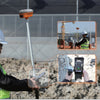How to Adjust a Survey Bipod ?
How to Adjust a Surveying Bipod?
Setting up your bipod survey instrument does not differ so much when setting up a surveying tripod. But there are still some major differences that may confuse some people.
1. Pre-Adjustment Preparations
Start by inspecting your equipment. Check the survey bipod legs for wear or potential damage. Be sure that the legs are free from debris and check all the joints and connections so they can provide adequate stability.
2. Initial Setup and Positioning
Be sure to pick a good point and stable ground where to set up your equipment. Spread the legs to ensure optimal stability. You can pin them down to the ground so when you move your legs to fine-tune, you don’t need to drag them on the ground and mess everything app. Make sure to set the adequate bipod height so as to match your survey equipment and their uses.
3. Fine-Tuning the Bipod
After you secure the legs to prevent movement, you need to adjust the head to ensure it is level. Each bipod comes with a bubble level to help you level it up and two buttons on the side to help expand and move the legs. After you let go of the buttons, the legs are locked in and they won't move anymore.
4. Securing the Surveying Instrument
Now comes the time to attach the needed survey bipod parts. Mount the instruments you need and ensure that they are tightly secured and balanced. You can use the surveying bipod prism pole so it helps you with the balance and also allows you to mount added equipment which may even allow you to do various GPS surveys.
5. Practical Tips for Accurate Measurements
While surveying, you might need to re-adjust the bipod from time to time. Being that it is not as stable as a surveyor tripod, checking if it is level from time to time will help it be more effective. Also, make sure that all the instruments that you are using are clear.
Bipod Surveying Conclusion
While the opinion about using bipods is divided among surveyors, they absolutely have their own uses and advantages. Yes, it is true that for a much more serious survey that requires pint-point accuracy a tripod is a much better option. But if you need to set up quickly and precision is not the primary aim, a bipod is a good option.
Plus, they are much less expensive than those bigger surveying equipment, especially compared to a tripod. Some surveyors are able to completely rely on bipods and even use them in construction and various other types of sites. All in all, depending on your need as a surveyor, you will be able to get by with a survey bipod with ease.
How to calibrate a survey rod?
Calibrating a survey rod ensures accurate measurements and involves inspecting the rod for damage, using a flat, level surface, and comparing the rod to a reference measurement. The rod must be aligned vertically using a level, and any discrepancies between the rod and the reference should be marked and adjusted accordingly.
After making adjustments, the rod is rechecked for accuracy, and the calibration process, including any adjustments, is documented. Regular calibration is recommended, with frequency depending on usage, and proper handling and storage are crucial to maintaining the rod's accuracy.
What is the function of a bipod in surveying?
A survey bipod supports various kinds of surveying applications and activities. Their main function is to keep all the surveying instruments level, especially when doing it on uneven terrain. The instruments involved are targets, prisms, GPS antennas, rover rods, range poles, or prism poles.

